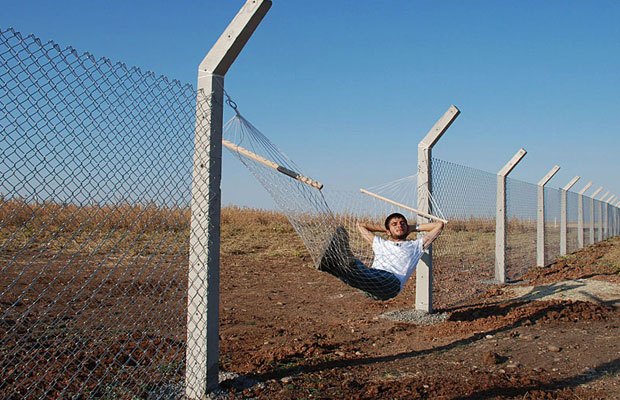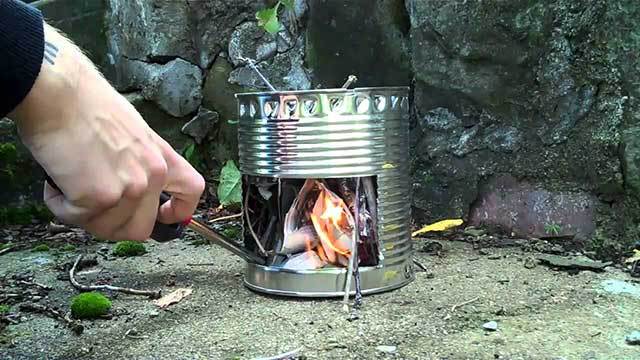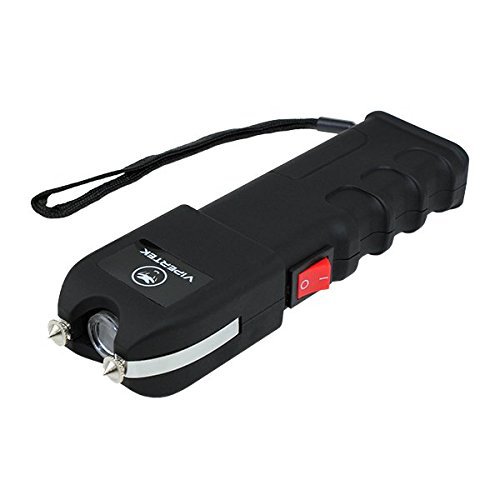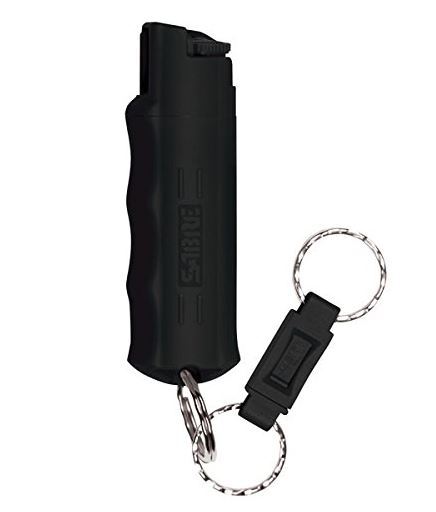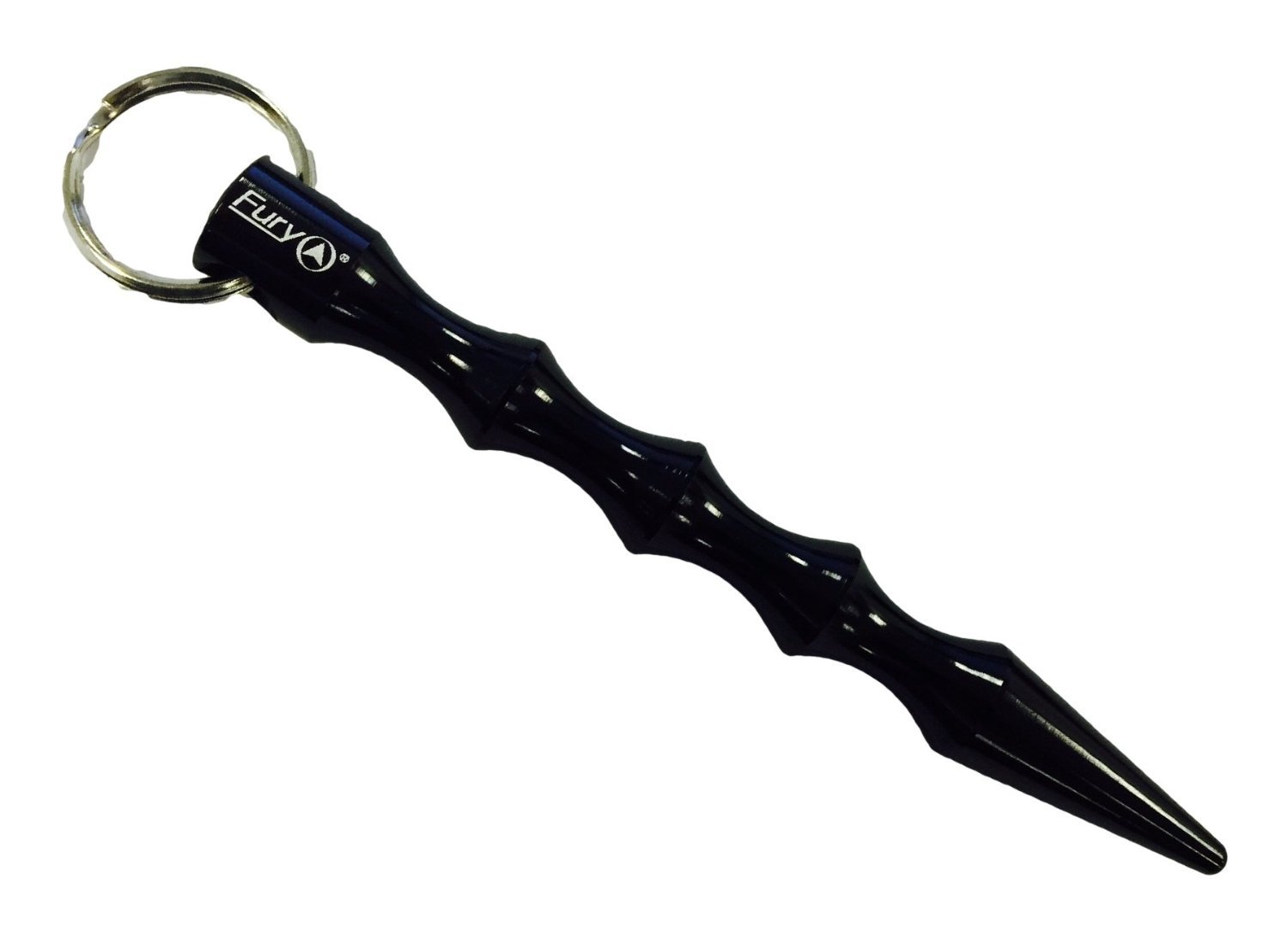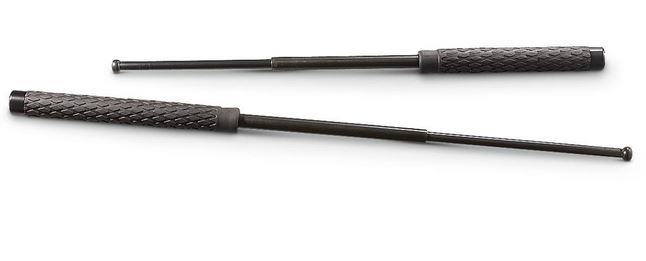As a prepper you’ve thought about the necessities for survival, but have you thought about your comfort? Imagine a long-term situation where you have food and water, but survival is a constant struggle. Will lack of sleep and uncomfortable surroundings take a toll on you over time? You might be sleep-deprived because of a need to stand guard against those who would do you harm, or simply because you’re not able to maintain a comfortable living environment. The inability to keep food from spoiling might result in a constant need to find food, robbing you of opportunities to rest. And, in harsh conditions, can you keep yourself clean and healthy? You may have considered bugging out, but you know that your home has most of what you need to survive, even if you’re not a serious prepper.
To get straight to the point; a reliable, sustainable, and ample alternative supply of electricity can solve the problems mentioned above and allow you the potential of living comfortably when the SHTF. A security system may include cameras, motion sensors, and trip wires to set off alarms. A surveillance system can keep an eye on your garden and animals in addition to your home, and alert you to an intrusion. Devices and systems relieve you of the need to stand guard.
An alternative source of electricity adds to your comfort by allowing you to cook meals indoors, and boil water, making it safe for drinking. You can use propane, wood, or charcoal for cooking if you have an ample supply of those, or you could use a solar oven, but nothing is as convenient as using electricity for indoor cooking.
The ability to preserve food means that you won’t have to hunt, harvest, and process food daily, providing opportunities for rest. With ample rest you’ll feel and perform better. A reliable supply of electricity allows you to use a refrigerator and freezer for food preservation. You may also need refrigeration to keep medicine from spoiling.
The biggest challenges, that is to say devices that use the most electricity, are air conditioning and heating equipment. The system described here is not large enough to handle whole-house heating and cooling systems. If you have a fireplace, you probably consider that as your source of alternative heat. If not, you may consider a wood- or pellet-burning stove. Each option has its advantages and disadvantages. If you rely on fuel such as propane or kerosene, do you have enough for a long-term situation? How much can you store safely, and how long will it last? Will you be able to replenish your supply when it runs low? Weigh your decision carefully, implement it, and then stock up on wood, pellets, or fuel. I chose to install a pellet stove. It can run up to 12 hours unattended and maintains a relatively constant output. I can safely store enough pellets to get me through the winter, and left-overs can be used the following winter. Most importantly, I’ll get a good night’s sleep, and I won’t be inhaling dangerous fumes.
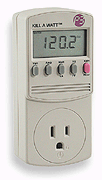
Kill A Watt Electricity Usage Monitor
You’ll also need electricity for communication devices, computers and tablets, TV, and Radio. Be sure to keep energy-efficiency in mind when shopping for any of these items. Energy-Star tags are helpful, but I’d rather measure energy use myself using a Kill-A-Watt meter. A Kill-A-Watt meter is a low-cost device that measures energy use over time (kilowatt-hours). You can find it at Wal-Mart or on Ebay.
Emergencies can occur at any time, in the middle of the night for example, and may include broken glass and structural damage to your home. The importance of good lighting cannot be overemphasized. You certainly don’t want to complicate an emergency situation with an injury.
Right-Sizing the Solar Electric System and Trade-Offs
If you want the same level of comfort as you had with grid-supplied electricity, you’ll pay a high price. To avoid the high cost, I’ll describe a system that will result in comfortable living, but there will be trade-offs. The system I’m outlining here can best be described as a mid-sized off-grid solar electric system. It’s not connected to your house wiring, so you’ll need extension cords, power strips, and light fixtures. I keep all of these items in a plastic container, so I won’t be fumbling around for them when grid power fails. I think you’ll agree that this modest system offers good trade-offs where comfort and cost are concerned. Don’t be fooled by pre-packaged systems that won’t actually meet your needs.
Home Heating
I’ve already listed alternatives to your existing whole-house system. In exceptionally cold weather you may want to use an electric blanket, and limit heating to one or two rooms. Table top and window fans are the most energy-efficient way to move heated or cool air.
Heating Water
As a substitute for your water heater, heating water over a fireplace or on a wood stove are good options. Since you won’t be using a fireplace or a wood stove when the weather is warm, you can heat water with one or more of your kitchen appliances, but the best option for heating water involves using the sun.
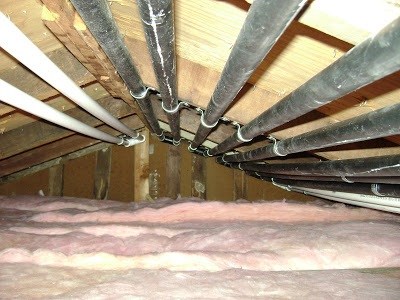
Harnessing the heat of the sun for water.
I’ve installed a PVC tubing grid in the attic portion of my storage shed for heating water. Mine is not the most efficient system, but I wanted a solution that would be out of sight and maintenance free. I use a hose to force water through the system when city water is available, but I can also use an electric pump. A fifty-gallon plastic barrel and a couple of hoses round out the system. Either way I can have a warm shower just about any afternoon or evening, using little or no electricity.
Other Decisions and Trade-Offs
I’ll begin by establishing some basic needs that will apply to many people, and then I’ll provide design details for a system large enough to meet those needs. Finally, I’ll discuss the cost, and some design options. I’ll assume that you’ve already ruled out a generator. You know that choosing a generator means that you’ll have to purchase, transport, and store a lot of fuel. What happens when the fuel runs out? Will noise from the generator attract unwanted attention, or mask the sound of approaching intruders? Instead, this is about a quiet and sustainable solution. You may only need to darken your windows to hide the fact that you’re living comfortably.

Honda EU2000I 2000 Watt Super Quiet Inverter Generator
Prerequisites
To keep the size, and therefore the cost, of a solar electric system down, there are a few things you can do. Often, adding insulation to an existing home can reduce the need for heating and cooling. Lights to be used with the system should be energy-efficient CFL or LED types. If your washing machine and other appliances are old, replace them with energy-efficient ones. Use a hotplate or microwave oven, instead of your gas or electric stove.
Identifying Your Needs
Once you’ve listed the devices you want to use, and estimated how long each device will run each day, you can calculate the total energy you’ll need by simple math. For example; a fan rated at 35 watts, running for 3 hours each day, will need 3 times 35, or 105 watt-hours each day. Likewise, a 10 watt lamp, running for 6 hours each day, would need 10 times 6, or 60 watt-hours each day. Adding the daily requirements of both equals a total need of 165 watt-hours per day. The following chart is an example of total daily energy use, where energy availability is limited. It assumes cold-weather conditions, where circulating warm air, or powering a pellet-stove in my case, is the largest single energy requirement.
4 10 watt LED bulbs 4 hrs each 160 wh per day
1 40 watt Laptop Computer 2 hrs 80 wh per day
1 120 watt Blower Motor (stove) 12 hrs 1440 wh per day
1 105 watt (intermittent) Chest Freezer 6 hrs 630 wh per day
1 80 watt Television 2 hrs 160 wh per day
1 30 watt Modem 2 hrs 60 wh per day
1 6 watt Clock Radio 24 hrs 144 wh per day
1 26 watt Cell Phone Charger 1 hr 26 wh per day
1 1000 watt Hot Plate 0.75 hr 750 wh per day
1 900 watt Toaster 0.10 hours 90 wh per day
1 1000 watt Microwave Oven 0.15 hours 150 wh per day
During periods of warm weather, when the stove is not used, my daily average load is greatly reduced. When the stove is used less, I can use devices not listed here, such as a vacuum cleaner and washing machine, and still not exceed the capacity of the system.
Determining the daily energy use of the Chest Freezer is a little tricky because its compressor runs intermittently. This is where a Kill-A-Watt meter comes in handy. Simply connect the Kill-A-Watt meter to the chest freezer and take note of how much energy it uses (in kilowatt-hours) over a 24 hour period. You can do the same for other devices that use electricity intermittently. (One kilowatt-hour equals one thousand watt-hours).
Tip: In a situation where keeping energy use to a minimum is important, move your chest freezer or refrigerator to the coolest part of your home. The compressor will run less, cutting energy use.

Renogy 400 Watt 12 Volt Monocrystalline Solar Starter Kit
Tip: When you have a choice, use energy during the day and limit night-time use. During the day, when the sun is shining, energy travels from the solar panels to the load. Nighttime energy comes from the batteries, and therefore is subject to charging and discharging losses and battery inefficiencies. Cooking, pumping water, and washing clothes are examples of tasks that can be relegated to daytime hours. Do this, and you’ll help to offset the negative effect of cloudy days and system losses.
Selecting the System Components
In the example above, the total energy used each day (the sum of the energy used by each device), is 3690 watt-hours. To determine how many solar panels you need, divide the need by the total hours of peak sunlight, in this case it’s 3690 by 4 ½, or 820 watts of solar panel capacity. Solar panels come in different sizes. Seven 120 watt solar panels will provide a little more power than you need, (840 watt-hours per day), while five 160 watt solar panels will provide a little less (800 watt-hours per day).

GM Deep Cycle 12v 125ah SLA rechargeable Battery for Use with Pv Solar Panels
Next, calculate the size of the battery bank you’ll need. Since batteries are rated in amp-hours, convert amp-hours to watt-hours. As an example: For a 12 volt deep discharge battery rated at 100 amp hours, calculate watt-hours by multiplying volts times amps. In this example, that single battery can theoretically supply 1200 watt hours. However, to avoid damage and maintain high life expectancy of the battery, you should not discharge the battery below 50%. This leaves you with 600 usable watt-hours for a fully charged battery. Because of battery inefficiencies, plan on the actual usable energy to be at least 10% less, or 540 usable watt-hours. Since you need a total capacity of 3690 watt-hours, you’ll need 7 batteries (7 times 540 ), to provide 3780 watt-hours of storage.
In the event that the cost of a system large enough to meet your needs is prohibitive, you may opt to cut back a bit on energy usage. There are many ways to do that. Preparing meals in a microwave oven, instead of on a hot plate, is one way:
Using a 1000 watt microwave oven for 15 minutes results in an energy use of 250 watt-hours.
Using a 1000 watt hot plate for 45 minutes results in an energy use of 750 watt-hours.
Read More: Cooking when the Grid goes Down
A slow-cooker (crock-pot) might seem like an energy-efficient choice, but remember, using a small amount of electricity over a long period of time is the energy-equivalent of using a large amount of electricity over a short period of time. A slow cooker might be a good option when something needs to be simmered for an hour or two.
The chart lists a small chest freezer, and no upright refrigerator/freezer. Upright refrigerator/freezers are inefficient because the cold literally “falls out” each time the door is opened. A chest freezer is much more efficient, and a 6 cubic foot chest freezer uses much less electricity than a 12 cubic foot chest freezer. A chest freezer not only keeps frozen food frozen, it makes ice for use in an ice chest for items that need to be kept cold, but not frozen.
How Much Will it Cost?
I’ll assume that you’re doing all of the work yourself, and will not include labor costs.
Once you’ve calculated your needs, you may choose to build larger or smaller than the system described here. Adding solar panels helps to improve system performance by increasing charging power, and adding batteries helps to improve performance by increasing the storage capacity. If you want to maintain a system output in excess of 3690 watt-hours each day, consider adding at least one more solar panel and two more batteries. Anticipate extended periods of cloud cover.
The per-watt cost for solar panels is currently between one and two dollars. Therefore, 820 watts of solar panel capacity will cost between $820 and $1,640. Shop around for the best price. Sometimes you’ll find sales or special deals.
Having explored various battery types and compared costs, I’ve determined that the best value when considering cost vs storage capacity to be GC-2 deep-discharge batteries. GC-2 batteries are rated at six volts, so you’ll need a series-parallel wiring arrangement. It’s easy to do. For the system described here, you’ll need at least 6 of the GC-2 batteries for a total watt-hour storage capacity of just over 3700. GC stands for “Golf Cart”. These are available under several different brand names and at many stores, including SAMs Club. You’ll pay about $100 per battery, for a total cost of $600.
Consider 8 batteries if your budget will allow it. Although you can get by with 6 batteries, making your battery bank larger than your calculated need offers three advantages. 1. A larger battery bank helps to compensate for extended periods of cloud cover. 2. The load on the battery bank will be distributed over more batteries, resulting in an efficiency boost. 3. Distributing the load across more batteries will extend the life of the battery bank.
The next component is a charge controller. A charge controller uses power from the solar panels to safely and efficiently charge the batteries, and prevents overcharging. A charge controller helps to extend the life of the batteries.
Top of the line charge controllers have advanced features which can, in some cases, dramatically improve system performance. However, these features come at a high price, and not all advanced features are beneficial to a system such as the one described here. For now we’ll consider a reasonably priced, but good, charge controller.

Renogy Tracer 4210 40 Amp MPPT Charge Controller, 12/24V 100VDC Input
The charge controller you’ll need will be one that can handle the maximum current that your solar panel array can produce. For the system we’re describing here, a 60 amp charge controller will do the job, and leave room for expansion. While it’s not your only option, a Morningstar Tri-Star 60 will do nicely. I highly recommend the remote meter option, and the battery temperature option. The cost for the controller, with options, is about $350.
So far, I’ve listed all of the major components for a 12 volt DC system, but you’ll probably want to add an inverter. An inverter converts 12 volts DC (your battery bank voltage), to 120 volts AC. In making your decision, you should understand the pros and cons of two basic types, MSW, (Modified Sine Wave), and PSW (Pure Sine Wave). PSW inverters can safely power sensitive devices, but are much more costly than MSW inverters. A TV or Radio can be powered with a MSW Inverter, but you’ll probably hear an annoying buzz in the sound, and the picture may have streaks. Motors may run at the wrong speed, or overheat when using a MSW inverter. Inverters are rated by how much AC power they can provide. If you opt for a 600 watt inverter, you won’t be able to use a toaster, microwave oven, or any other device that requires more than 600 watts. If you want to watch TV, use some lights, and power a chest freezer at the same time, the total power (the sum of the individual power requirements), cannot exceed the capacity of the inverter.
My preference is an inverter that doesn’t harm sensitive devices, has enough power to handle most high-power devices, and can power most of my devices simultaneously. An Exeltech 1100 watt PSW Inverter can handle just about any load I’ll connect to it, but not all at the same time. For example; if I decide to use my 1000 watt microwave oven, I can’t use my 900 watt toaster at the same time. The total would be 1900 watts, exceeding the capacity of the inverter by 800 watts. My choice was to accept that inconvenience, rather than to pay an additional $1100 for a more powerful inverter. The cost of the Exeltech inverter is about $575, which is about $1100 cheaper than a good quality 2000 watt PSW Inverter. I’m aware of lower-cost PSW inverters, but I’m not sure if they match the quality, performance, and reliability of Exeltech products.
Tip: Some electric motors have a high starting current requirement. If the inverter you purchase can’t provide that initial starting surge, the device will not run.
Mounting the Solar Panels, Wiring, and other Considerations
Solar panel mounting can be as simple as bolting them to a south-facing roof for less than $50, or more complicated if you intend to build a mounting framework. Your creativity can help to keep the cost low.
Wire, wiring hardware, fuses, and a lightning protection device round out the requirements for a complete system. Because of the high current flow, battery wiring is the heaviest (thickest), wire. The wire you’ll use between the solar panels and the charge controller should be able to handle the maximum output current from your solar panels, and should be rated for outdoor use. Your local hardware store should have what you need. Since it’s a 12 volt system as far as the panels and batteries are concerned, I opted for low-cost automotive fuses and in-line fuse holders. I used heavy-duty terminal blocks, the kind you find in circuit breaker boxes, to tie the wiring together. You’ll need battery terminals or lugs, tie-wraps, tape, and other hardware. The cost of the wiring depends upon how far the solar panels are from the controller, but you may get everything you need for less than $300.
The total cost of your system, not including labor, should be in the neighborhood of $3000. You may choose to build with fewer panels and fewer batteries and add to the system at a later time. If you start small, buy a charge controller large enough to handle a bigger system so you don’t have to replace it when you expand. For less than $1000 you could build a system that can provide power for lights, TV, radio, fan, computer, and other small devices, but with limited use of course. For a little bit more than that you could power a small chest-freezer or refrigerator, in addition to those other devices.
The total cost may seem expensive compared to the cost of a generator, but don’t forget it’s sustainable and there are no operational costs. Assuming no physical damage or vandalism, solar panels will last 25 years. The batteries, with good care, can last in excess of 5 years. A properly constructed system will be almost maintenance-free.
Become an expert (or at least knowledgeable)
If you think a system like this is right for you, start by learning all you can, especially about batteries. Batteries are the most expensive component when you consider that they’ll need to be replaced more than once for the life of your system. Most importantly, know when to shut down your system to prevent over-discharge. Learn about battery types, paying special attention to those that last longer, but at a higher cost. Compare inverters and read reviews on them. Purchase reliable components, because you can’t afford a failure when the SHTF.
When you’ve built your system, test the heck out of it. This is where the Charge Controller’s remote meter comes in handy. Simulate grid power failures and see how long your system can power the loads. Upgrade if you’re not satisfied with the run-time.
Tip: As a capacity test I’ve connected two light bulbs, one 60-watt and one 100-watt bulb. A load of 160 watts over a 24 hour period equals a daily load of 3840 watt-hours. I’ve connected a Kill-A-Watt meter to the inverter’s output to keep track of the power that the system delivers. In bright sunlight the solar panels provide enough power to charge the batteries and power the load simultaneously. However, batteries charge more quickly if no additional loads are present. I record test results each time, which helps me determine when my batteries need to be replaced.
Failure Considerations
Perhaps the biggest threats to your system are lightning, and EMP events. You will, no doubt, use a lightning protection device, but it may not save your system in the event of a direct hit. An EMP event would have to be close and strong, to do any damage. In either case, it’s not likely that the solar panels and batteries would be damaged. The most vulnerable component is the charge controller. Here’s the good news: In the event that a replacement charge controller is not readily available, you can connect the solar panels directly to the battery bank. You’ll have to monitor the battery voltage, disconnecting the solar panels (charging source), when the batteries are fully charged. It’s inconvenient, but at least you won’t be without electricity. You shouldn’t have to worry about disconnecting the loads when the battery SOC falls below 50%, because most inverters will automatically disconnect at that point. You might also consider a low-cost MSW inverter as a back-up for your primary inverter.
Bartering
Assuming that you have an ample supply of electricity, you might consider charging batteries for your neighbors. I’m assuming a SHTF situation where those around you are also trying to live comfortably. A fully-charged automotive or deep-discharge battery might be used for lighting, to power a TV or radio, a fan, tablet computer, etc.
Taking it to the next level
If you build the system described here and then wait for a SHTF situation, you’re wasting a great resource. Why not use the system every day, and cut your electric bill? I’ve added two components to the system described here and accomplished just that.
I use an IOTA Automatic Transfer Switch to select either grid-supplied power or inverter-supplied power to run my refrigerator. When my batteries are above 50% SOC (state of charge), the refrigerator gets power from the batteries, via the inverter. When the battery SOC drops below 50%, the refrigerator is powered by the grid. I use a Morningstar Relay Driver to monitor battery voltage, and switch the inverter on or off. I can fine-tune the upper and lower thresholds as I see fit. When the transfer switch senses the loss of power (because the inverter is switched off), it automatically switches to grid power for the refrigerator. The Relay Driver is programmed to not turn on the inverter again until the batteries are once again fully charged. This happens automatically. It’s a wondrous thing to observe.
Should you decide to build the system I’ve described, or something like it, you’ll probably have many questions. The Wholesale Solar website has a wealth of information for solar do-it-yourselfer.
Summary
How much does electricity contribute to your survival? Try switching it off for a week and see how well you cope. With electricity you’ll live comfortably, not just survive, while the world around you crumbles. A good night’s sleep, vital to your long-term survival, is made possible because of sensors, appliances, and automatic systems. If you wait until things get bad you’ll be forced to use the resources you have, not the system you planned to install someday. Surviving a crisis doesn’t need to be unbearable, or even uncomfortable. It won’t be if you prepare in advance.
Perhaps some will say “I’m looking for ways to survive, while you’re talking about watching TV, wrapped in an electric blanket, after a hot meal and a warm shower.” I get it, but I want to live for a few more decades, and I plan do it in comfort.
As a prepper you’ve thought about the necessities for survival, but have you thought about your comfort? Imagine a long-term situation where you have food and water, but survival is













